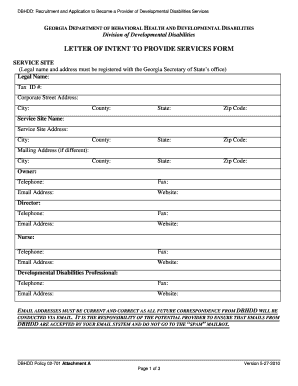Sample Proposal Letter
What is Sample Proposal Letter?
A sample proposal letter is a document that outlines a proposed plan, idea, or project and is typically used to persuade the reader to take action or make a decision. It is commonly used in business settings to present a formal proposal to potential clients, investors, or stakeholders.
What are the types of Sample Proposal Letter?
There are different types of sample proposal letters, each serving a specific purpose. Some common types include:
Business proposal letters: These letters are used to propose a business idea, partnership, or collaboration to another business or organization.
Project proposal letters: These letters outline the details and objectives of a proposed project, including the scope, timeline, and budget.
Grant proposal letters: These letters are written to request funding or grants for a specific project or cause.
Job proposal letters: These letters are used by job seekers to propose their skills, qualifications, and suitability for a specific job position.
Event proposal letters: These letters are sent to potential sponsors or organizers to propose an event, including its purpose, logistics, and benefits.
How to complete Sample Proposal Letter
Completing a sample proposal letter requires careful consideration and attention to detail. Here are some steps to follow:
01
Start with a clear and concise introduction, stating the purpose of the proposal.
02
Provide a brief background or overview of the project or idea.
03
Outline the objectives, goals, and expected outcomes of the proposal.
04
Include a detailed description of the plan, including timelines, resources required, and any other relevant details.
05
Address any potential challenges or risks associated with the proposal and propose solutions.
06
Highlight the benefits and advantages of the proposal, emphasizing its potential value and impact.
07
Include a compelling call-to-action, inviting the reader to take the desired action or make a decision.
08
Proofread and edit the proposal letter for clarity, grammar, and coherence.
09
End the letter with a professional closing and contact information for further communication.
pdfFiller empowers users to create, edit, and share documents online. Offering unlimited fillable templates and powerful editing tools, pdfFiller is the only PDF editor users need to get their documents done.
Thousands of positive reviews can’t be wrong
Read more or give pdfFiller a try to experience the benefits for yourself
Questions & answers
What is proposal with example?
A proposal is a suggestion, usually in written form, to get people to support an idea or plan. A well-written proposal can help to secure a deal.
What are the 4 parts of a proposal?
Basic Components of a Proposal Cover or Title Page. The Title Page contains the following information: Abstract or Project Summary. The abstract outlines the proposed research, including the objectives, methodology, and significance of the research. Statement of Work. Budget.
What are the basic parts of proposal letter?
Key Elements of a Complete Proposal. Cover. Table of Contents. Abstract (also called Project Summary) Project Description (also called Narrative or Research Plan) Budget Explanation (also called Budget Justification) Vita (also called Resume or Biographical Sketch) Other Support (also called Current and Pending Support)
What are the three parts of a proposal?
What we'll focus on this lesson are the three essential parts of every proposal. Number one, state the problem. Number two, provide the solution. And number three, highlight your qualifications.
How do you start a business proposal letter?
How to write a business proposal letter Create a business header. Address the recipient properly. Include relevant background details. State the purpose of the proposal. Include a request to follow up. Close the letter appropriately. Include supporting documentation.
How do you start a business proposal email?
Steps to writing a proposal email A brief introduction and any background knowledge. Explain why you're submitting the proposal. Establish theirs and your objectives and goals. Emphasize your unique qualities. Briefly discuss the budget and how it will be used. Include a call to action and follow-up request.





















